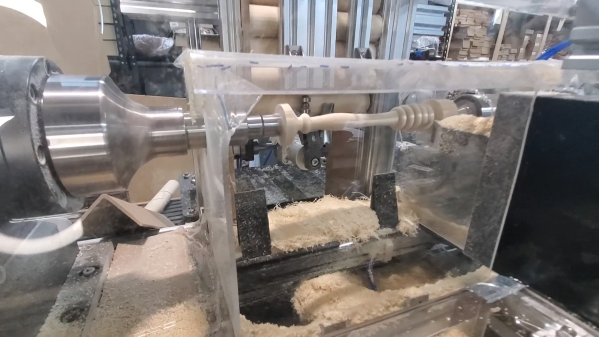The trouble with building a business around selling low-margin widgets is that you have to find a way to make a lot of them to make it worth your while. And if the widget in question is labor-intensive to make, you’ve got to find ways to reduce your inputs. That sounds like a job for industrial automation, a solution that’s often out of reach of small shops, for all the obvious reasons. Not if you’re clever about things, though, as this fully automated CNC lathe work cell shows.
This build comes to us from the woodshop of [Maher Lagha], where he’s making wooden honey dippers. Wooden dowel blanks are dispensed from an infeed rack and chucked between centers on the headstock and pneumatic tailstock. A two-axis stage in front of the workpiece moves a tool against the spinning stock, carving out the honey dipper in just a few minutes. When the lathe work is done, the spindle stops, the tailstock pulls the honey dipper back off the headstock, and a pneumatic piston unceremoniously whacks the almost-finished part — it looks like it still needs a little manual post-processing — into a bin. Lather, rinse, repeat, profit.
[Maher] doesn’t provide many details, but just looking at the work cell shows a veritable feast of industrial automation equipment. The spindle and tailstock of the lathe sit on a bed made from a massive slab of aluminum extrusion, and the X- and Y-axes use linear rails and ballscrews. And mindful of the effects of wood chips on delicate mechanisms, [Maher] did a good job of containing the mess with a host of acrylic guards.
As we said when we saw [Maher]’s wooden coaster work cell a while back, the wood widget business must be pretty good to justify automation like this. What’s nice with both these rigs is that they look like they could be quickly reprogrammed and retooled to create other products. Pretty impressive.
Continue reading “Autofeeding CNC Lathe Cranks Out Parts All By Itself”


















